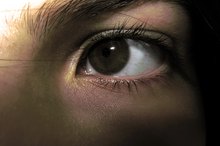What does fact checked mean?
At Healthfully, we strive to deliver objective content that is accurate and up-to-date. Our team periodically reviews articles in order to ensure content quality. The sources cited below consist of evidence from peer-reviewed journals, prominent medical organizations, academic associations, and government data.
- Mayo Clinic: Dust Mite Allergy
- National Library of Medicine: Dust Mite Allergy
- Mayo Clinic: Allergies
The information contained on this site is for informational purposes only, and should not be used as a substitute for the advice of a professional health care provider. Please check with the appropriate physician regarding health questions and concerns. Although we strive to deliver accurate and up-to-date information, no guarantee to that effect is made.
Common Side Effects of Dust Mites
According to the National Library of Medicine, dust mites are small insects, related to the spider, that live in humid, warm places such as in bedding, upholstered furniture and carpet. Not everyone is allergic to dust mites, but for people who are, the common side effects include itchy eyes, nasal complications, facial pressure, asthmatic reactions and dizziness, according to the American College of Allergy, Asthma and Immunology 2. The MayoClinic.com states that a dust mite allergy is a reaction of the immune system that attempts to fight off dust mite byproducts 1. An allergist can confirm that you have a dust mite allergy and will recommend the best treatments 1.
If you are experiencing serious medical symptoms, seek emergency treatment immediately.
Dizziness
According to Inspiredliving.com, breathing in dust mites can lead to dizziness. This can be a result of excessive fluid in the ears or pressure from inflamed sinuses. Someone who experiences severe dizziness should consult a medical doctor, as it could be a sign of a more serious condition.
Nasal Complication
Puffy and Itchy Face from Allergies
Learn More
When the body has an allergic reaction, it causes inflammation in the sinus cavity, according to the MayoClinic.com. Dust mite side effects can include nasal discharge, sneezing, postnasal drip and congestion. The swollen sinus cavity places pressure on surrounding parts of the body, such as the upper teeth and the inner ear. Pressure placed on the inner ear can lead to physical imbalance and dizziness. Postnasal drip can lead the development of postnasal drip, which can cause a chronic cough.
- When the body has an allergic reaction, it causes inflammation in the sinus cavity, according to the MayoClinic.com.
- Postnasal drip can lead the development of postnasal drip, which can cause a chronic cough.
Asthmatic Reactions
The National Library of Medicine states that a common side effect of dust mites is asthmatic reactions such as wheezing, tightness of the chest and difficulty breathing. When someone experiences an asthma attack, a common result is dizziness because of the lack of oxygen getting to the brain. A person with allergy-induced asthma resulting from dust mites should talk with her allergist about allergy shots.
Facial Pressure
How to Relieve Pressure in the Ears From Sinus Drainage
Learn More
Facial pressure pain is the result of inflammation in the sinus cavity, according to the MayoClinic.com. The eyes, cheekbones and forehead may be sensitive to touch. The facial pressure can make a person feel tired and lethargic. If facial pressure develops along with facial swelling, medical attention is needed.
- Facial pressure pain is the result of inflammation in the sinus cavity, according to the MayoClinic.com.
- If facial pressure develops along with facial swelling, medical attention is needed.
Eye Irritation
According to the MayoClinic.com, a dust mite allergy causes eye irritation 1. Because of elevated levels of histamine in the bloodstream, the eyes can become watery, red and extremely itchy. In extreme cases, the eyes can become swollen, developing a black and blue appearance. This condition is more common in young children. Antihistamine eye drops are used to help to alleviate eye irritation side effects from dust mites.
- According to the MayoClinic.com, a dust mite allergy causes eye irritation 1.
- Because of elevated levels of histamine in the bloodstream, the eyes can become watery, red and extremely itchy.
Related Articles
References
- Mayo Clinic: Dust Mite Allergy
- American College of Allergy, Asthma and Immunology: House Dust Allergy
- Inspired Living: Allergy and Asthma Irritants, Resources and Products to Ease Allergy Symptoms
- Mayo Clinic: Allergies
- American Lung Association. Dust mites. Updated July 1, 2019.
- Nelson HS. Immunotherapy for house-dust mite allergy. Allergy Asthma Proc. 2018;39(4):264-272. doi:10.2500/aap.2018.39.4145
- Kim JY, Rhee CS, Cho SH, Choe G, Kim DY, Han DH. House dust mite sublingual immunotherapy in children versus adults with allergic rhinitis. Published online ahead of print, 2020 Jun 13. Am J Rhinol Allergy. 2020;1945892420931713. doi:10.1177/1945892420931713
- Asthma and Allergy Foundation of America. Dust mite allergy. Updated October 2015.
- Babe KS Jr, Arlian LG, Confer PD, Kim R. House dust mite (Dermatophagoides farinae and Dermatophagoides pteronyssinus) prevalence in the rooms and hallways of a tertiary care hospital. J Allergy Clin Immunol. 1995;95(4):801-805. doi:10.1016/s0091-6749(95)70121-4
- Illinois Department of Public Health. Mites affecting humans.
- Lee E, Lee SY, Park MJ, Hong SJ. TNF-α (rs1800629) polymorphism modifies the effect of sensitization to house dust mite on asthma and bronchial hyperresponsiveness in children. Published online ahead of print, 2020 May 20. Exp Mol Pathol. 2020;115:104467. doi:10.1016/j.yexmp.2020.104467
- Boberg E, Johansson K, Malmhäll C, Weidner J, Rådinger M. House Dust Mite Induces Bone Marrow IL-33-Responsive ILC2s and TH Cells. Int J Mol Sci. 2020;21(11):E3751. Published 2020 May 26. doi:10.3390/ijms21113751
- Weitzel T, Makepeace BL, Elliott I, Chaisiri K, Richards AL, Newton PN. Marginalized mites: Neglected vectors of neglected diseases. PLoS Negl Trop Dis. 2020 Jul 23;14(7):e0008297. doi: 10.1371/journal.pntd.0008297. PMID: 32701946; PMCID: PMC7377360.
- Atta AH, Amer RM, Mesbah AE, Khater MW. Sublingual Versus Subcutaneous Immunotherapy as regards Efficacy and Safety in Respiratory Allergic Patients. Egypt J Immunol. 2019;26(2):65-78.
- American Lung Association. Dust mites. Updated July 1, 2019.
Writer Bio
Emily DeSerio has been a freelance writer since November 2009. DeSerio works in the mental health field as a clinical social worker. She began her higher level education at the University of South Florida (USF) with a B.A. in English and went on to complete a Master of Social Work degree at USF as well.








